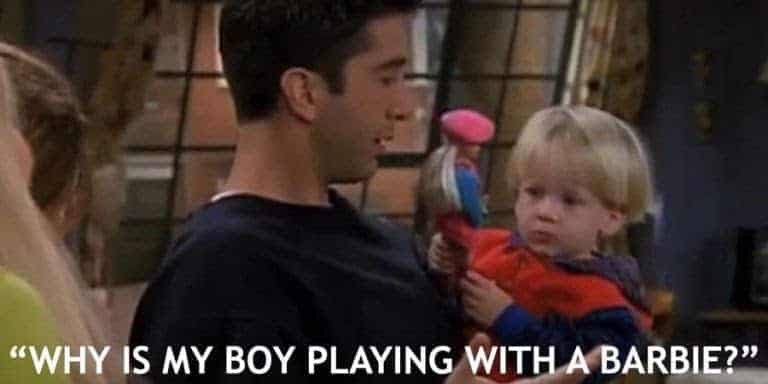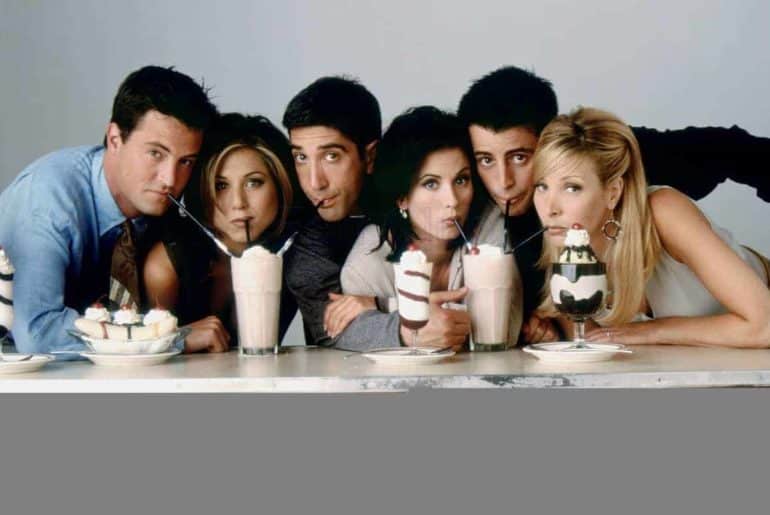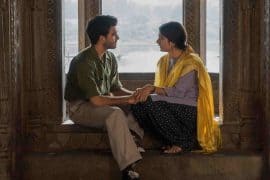F.R.I.E.N.D.S has forever been one of the most loves shows on television, always celebrated for its inclusion and liberal spirit. However, this year, on the 24th anniversary of the show, DU Beat brings to you the other part of the conversation about the who’s weak, abysmal portrayal of the LGBTQIA+ community and communities of colour.
F.R.I.E.N.D.S. has been one of the most loved shows in the history of television since 1994. In its journey of 10 seasons, the show traces the journey of six reckless adults living in Manhattan and their lives revolving around love, friendship, and family. Today, as we celebrate its 24th anniversary on 22nd September, 2018, we bring to you a few shades of the show that were left uncoloured.
Throughout the 90’s, TV shows introduced gay characters, culminating with Ellen’s coming-out episode in 1997 and Will & Grace debuting in 1998. The first gay kiss happened on TV on LA Law in 1991. TV commercials also started showing pairs of men/women who could be viewed as couples.
Friends, thus became a part of the movement by offering more LGBTQIA+ characters, though problematic in their representation. The show reflected the reality of gay characters, to a certain extent, but avoided all forms of direct physical intimacy between gay characters. For instance, the episode featuring Carol and Susan’s wedding did not have a kiss.

However, the show’s representation of minority communities and their portrayal through its characters does become highly problematic. Every time, Chandler says the word, “gay”, we can hear panic and shame in his voice. The show was also identified as largely homophobic with its anti-gay jokes and portrayals.
There were various instances in the show where we could blatantly see the anti-gay sentiment. Ross aggressively asks a male nanny if he is gay. Monica judges Chandler for knowing songs from all musicals. Joey complains about queer women not sleeping with him and there is an entire episode where Rachel remembers making out with her university friend, Winona Ryder, and then pities herself for thinking about that, with romantic interest.
Unfortunately, it’s characters like Chandler and Ross who are most disturbed with queerness, despite having gay family members. There is also an entire episode on Ross freaking out about his son, Ben playing with a Barbie infront of his queer co-parents.

“Their lesbianism and Ross’ discomfort with that was definitely something the show used as a punchline. The people from minority communities were mainly side characters, not one main character was queer. Chandler and Joey made homophobic jokes continuously. The show fed into the discomfort and stigma around men doing things that are not masculine so the whole Nap Buddies episode, with Ross and Joey sleeping together,” says Akanksha Rao, a third year Economics student of Jesus and Mary College.
Chandler’s attitude towards the LGBT community becomes very problematic as all his references towards his father are full of contempt and mockery. Chandler’s transgender father is often referred to as her birth name ‘Charles’ rather than her new name ‘Helena Handbasket’. Incorrect labels are used when the cast are talks about her and lots of jokes are made about her gender.
“They tried to show chandler as ‘feminine’ and that’s why he always had a problem getting girls, as people thought he was gay,” says Jayita Pande, a second year student of B.Com. (Hons.) at Jesus and Mary College.
Since people assume Chandler to be gay, he gets overly sensitive about them thinking of him as too feminine. In the show, being gay is also portrayed as something to be ashamed of. There’s an entire episode about Chandler finding out that people assume him to be gay and he comes of as scared and ashamed. This brings him across as an extremely homophobic character, constantly feeling the need to prove his ‘manliness’.
Apart from this, it becomes increasingly difficult to believe that these characters, despite living in Manhattan, do not encounter queer people or more people of colour in their lives. Unfortunately, the show creators centred the story around six white, heterosexual characters who conform to the norms at every chance possible. There really wasn’t any multicultural diversity in the show. The closest they got to it was through Ross’s Asian girlfriend, Julia. The only prominent black character throughout the series was Dr. Charlie Wheeler, who was also portrayed in a very negative light.
The show has always has major influence on teens all over the world and while adults, continuously surrounded by discourse about making the environment more queer friendly, are able to understand that the gay panic was a part of the period and the storyline did not mean to cultivate an anti gay sentiment, the impressionable kids watching the show still get swayed by the skewed representation and the faulty portrayal.
The question, however, does remain whether the homophobia that reflected in the show was a product of an anti-gay sentiment within the production or a genuine effort to start a discussion revolving around different gender identities.
Feature Image Credits: Vox
Muskan Sethi






Comments are closed.